Detail Guide to Exterior Car Parts: Exploring and What They Do
Introduction
As a car enthusiast or car owner, in addition to knowing the purpose and performance of various car lamps, understanding the various parts outside the car is also an important factor that will help us further enjoy the car and ensure safe driving. In this blog, we'll delve into the fascinating world of car exterior parts, understanding their roles and importance. So that we can better use the car and protect the lives of others and ourselves.

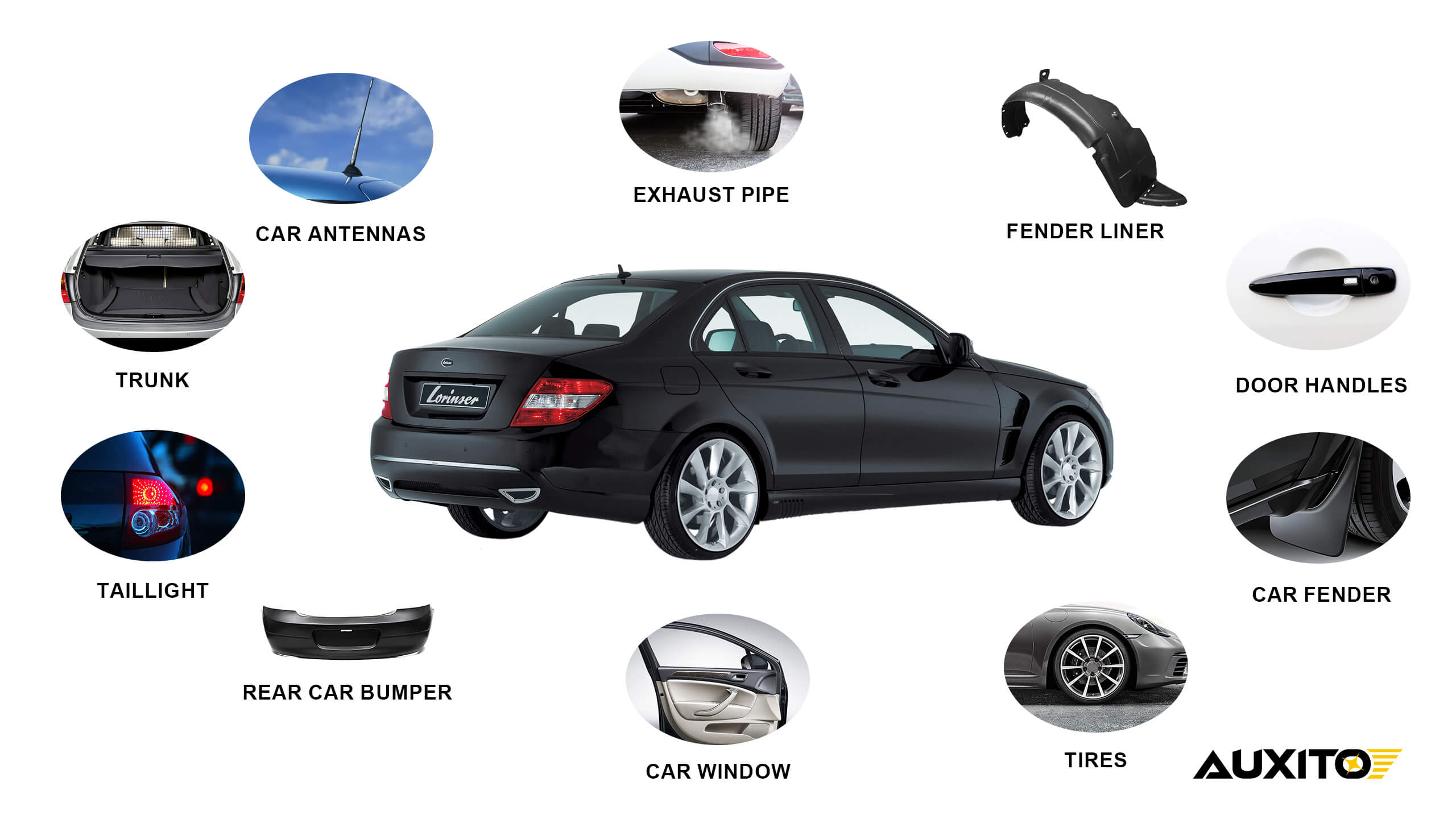
Contents:
- Section 1: Basic Structure and Protection
- Section 2: Front and Rear Protection and Design
- Section 3: Visibility and Illumination
- Section 4: Convenience and Security in Access
- Section 5: Traction and Performance
- Section 6: Identification and Communication
Section 1: Basic Structure and Protection
Body Shell
The body shell of a car refers to the outermost layer of structure that wraps the car's interior and mechanical components. It is the frame on which the car is built, and the design of its shell not only determines the overall appearance of the car but also affects aerodynamics, fuel efficiency and safety.
There are many types of bodies, including sedans, SUVs, hatchbacks, and coupes, each with its own unique exterior components. The body shell plays a crucial role in protecting occupants and enhancing the car overall performance. The chassis, as the foundation of the body shell, is usually made of durable materials such as steel or aluminum, providing structural rigidity and support for the entire vehicle.

Pillars
The car pillar, also known as the automotive pillar or post, refers to the vertical structural supports found throughout the vehicle's body structure. Its main function is to provide strength, stiffness and support for the overall structure of the vehicle, contributing to the overall stability of the car and crashworthiness.
The four pillars of the body bear different functions and structural requirements, which are A-Pillar: located at the front of the vehicle, on both sides of the windshield. B-Pillar: Located between the front and rear doors, usually behind the driver and passenger seats. C-Pillar: Located at the rear of the vehicle, behind the rear doors or windows. D-Pillar: Installed on vehicles with large rear windows, such as station wagons or SUVs.
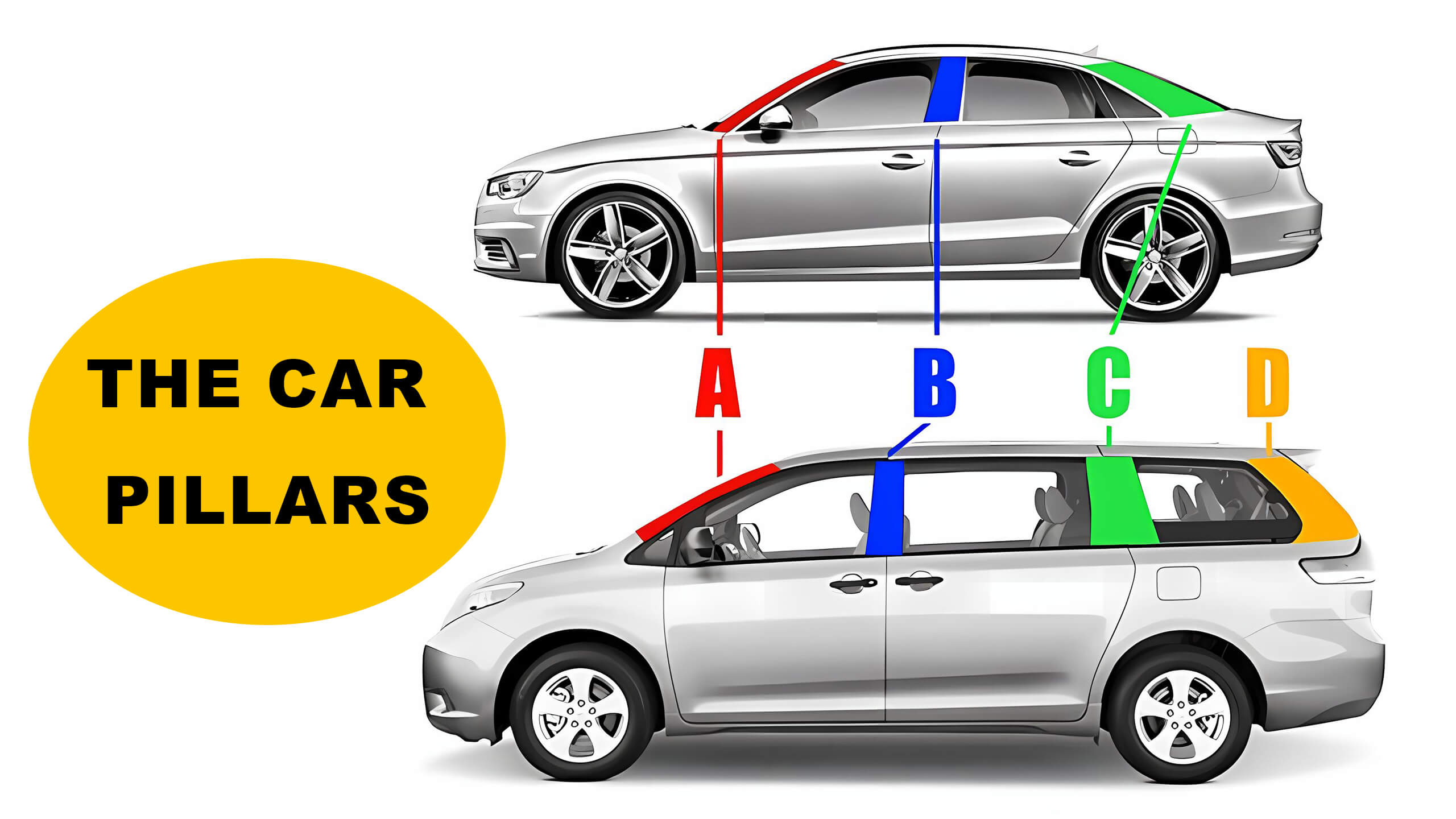
Among them, the B-pillar can be selectively affixed with pillar post trim, which can improve the appearance and texture of the car, but because the A, C, and D pillars are close to the front and rear of the car, they pay more attention to structure and safety and prevent it from affecting the car. The driver's field of vision, so generally do not stick stickers.
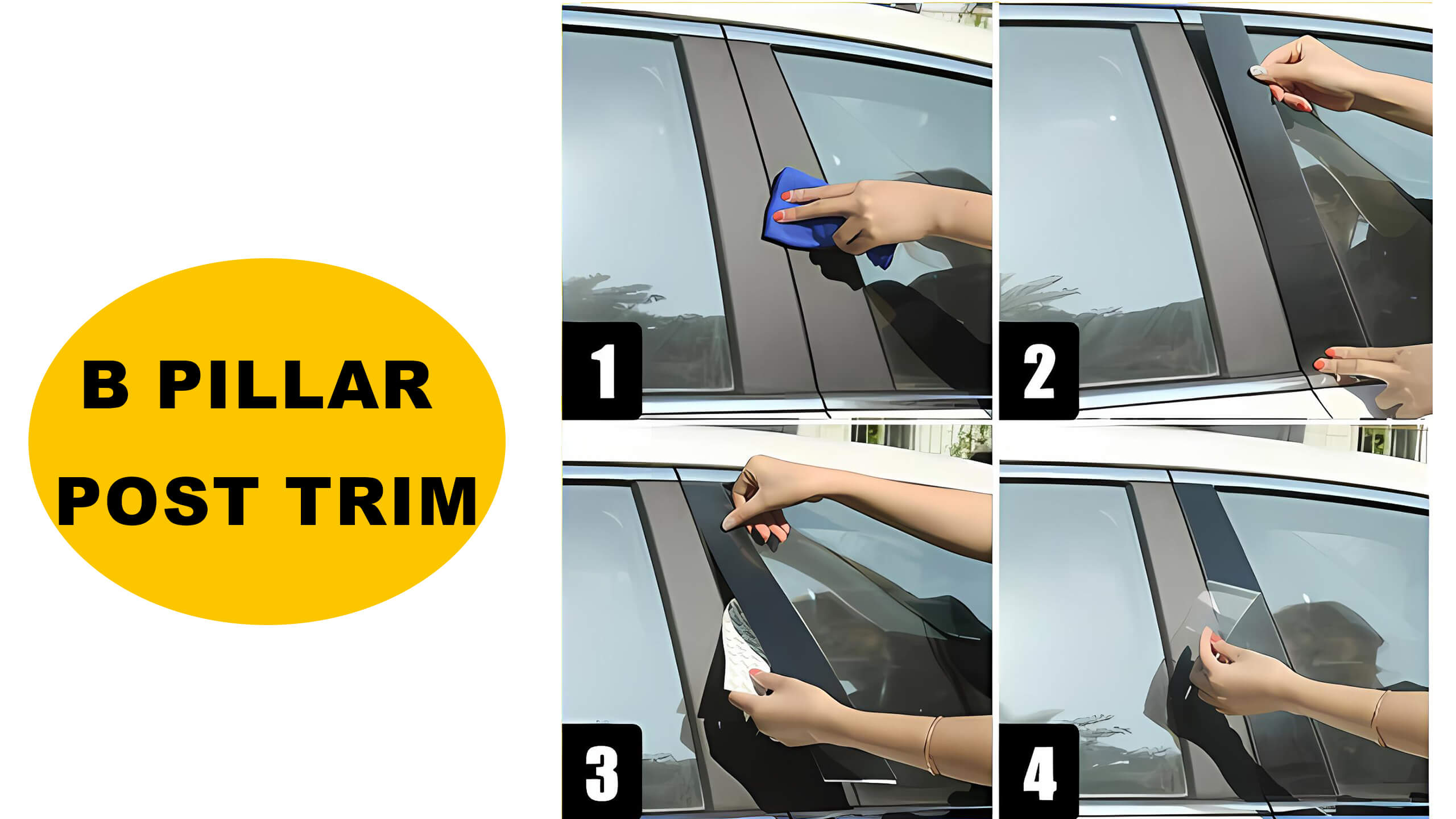
The Hood of A Car (Bonnet)
The hood of a car is usually called "hood" in the United States and "bonnet" in Europe. It is the hinged cover that sits at the front of the car, covering the engine compartment. It is mainly used to protect the engine and various parts in the engine compartment. In addition, the shape design can distribute energy in the event of a collision or impact, minimizing damage to the vehicle and protecting the safety of the occupants. Keeping the hood closed and locked securely while driving is therefore very important to prevent accidents.
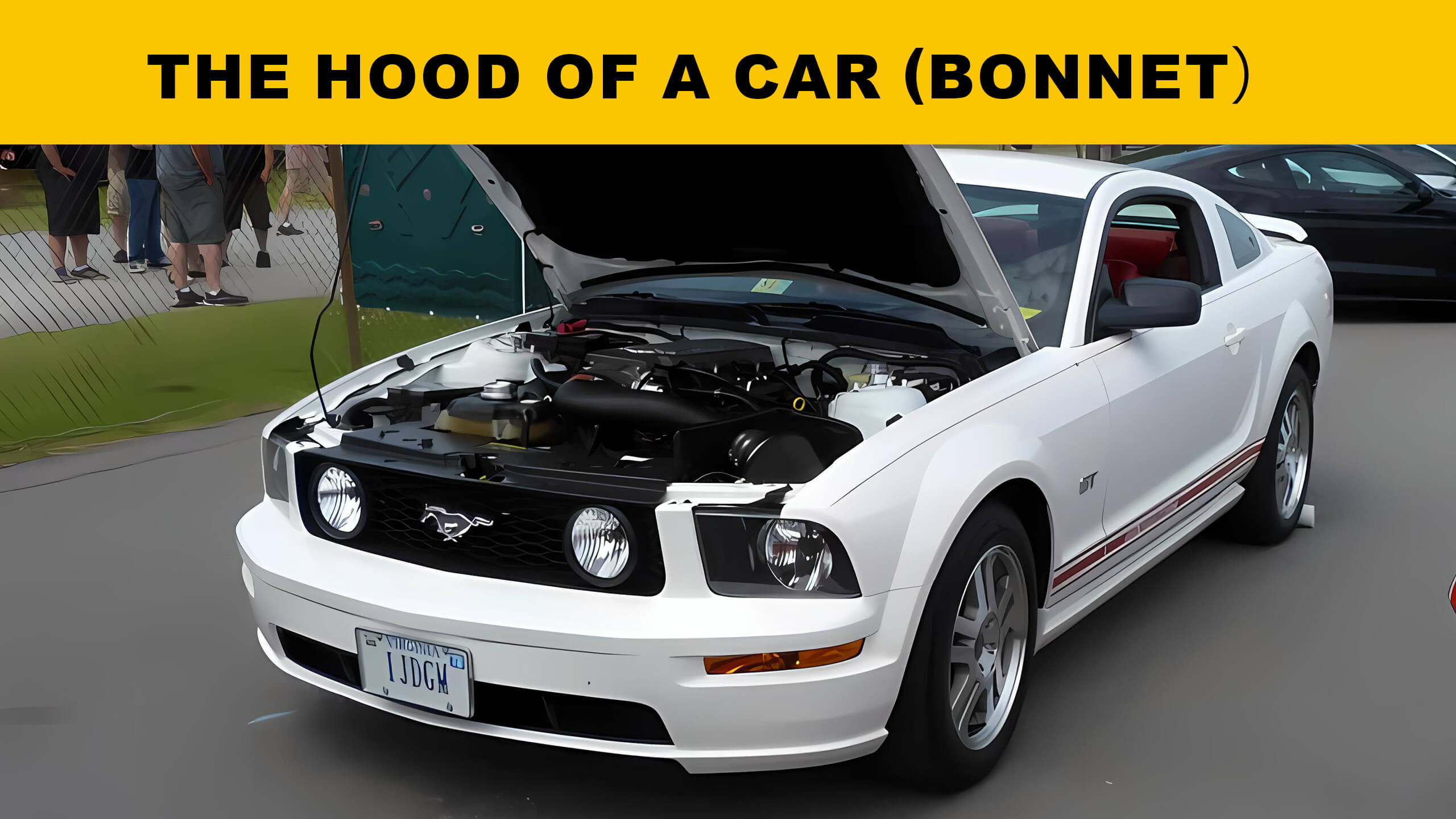
Section 2: Front and Rear Protection and Design
Car Bumper
Car bumpers are divided into front bumpers and rear bumpers. Its primary role is to absorb shocks, minimize damage to the vehicle's underlying structure, and reduce the risk of injury to occupants. It also acts as a barrier between the car body and other objects such as walls, poles, or other vehicles. It helps prevent direct contact and limits damage that can occur in minor accidents or parking accidents.

Regarding the maintenance of the bumper, car owners can generally choose to add protective accessories such as rear bumper diffuser, which can further reduce the degree of wear of the rear bumper in the event of a collision to protect the body.

It's worth noting that the bumper only absorbs minor impacts and may not be as effective in a high-speed crash. In this case, additional safety features such as airbags, seat belts and reinforced structures come into play to keep the occupants safe.
Bull Bar
The bull bar is a device installed on the front of the vehicle, which is mainly used to protect the front of the car from collisions. Not all cars are fitted with bull bars, mostly utility vehicles or vehicles used in off-road conditions, such as SUVs and trucks.
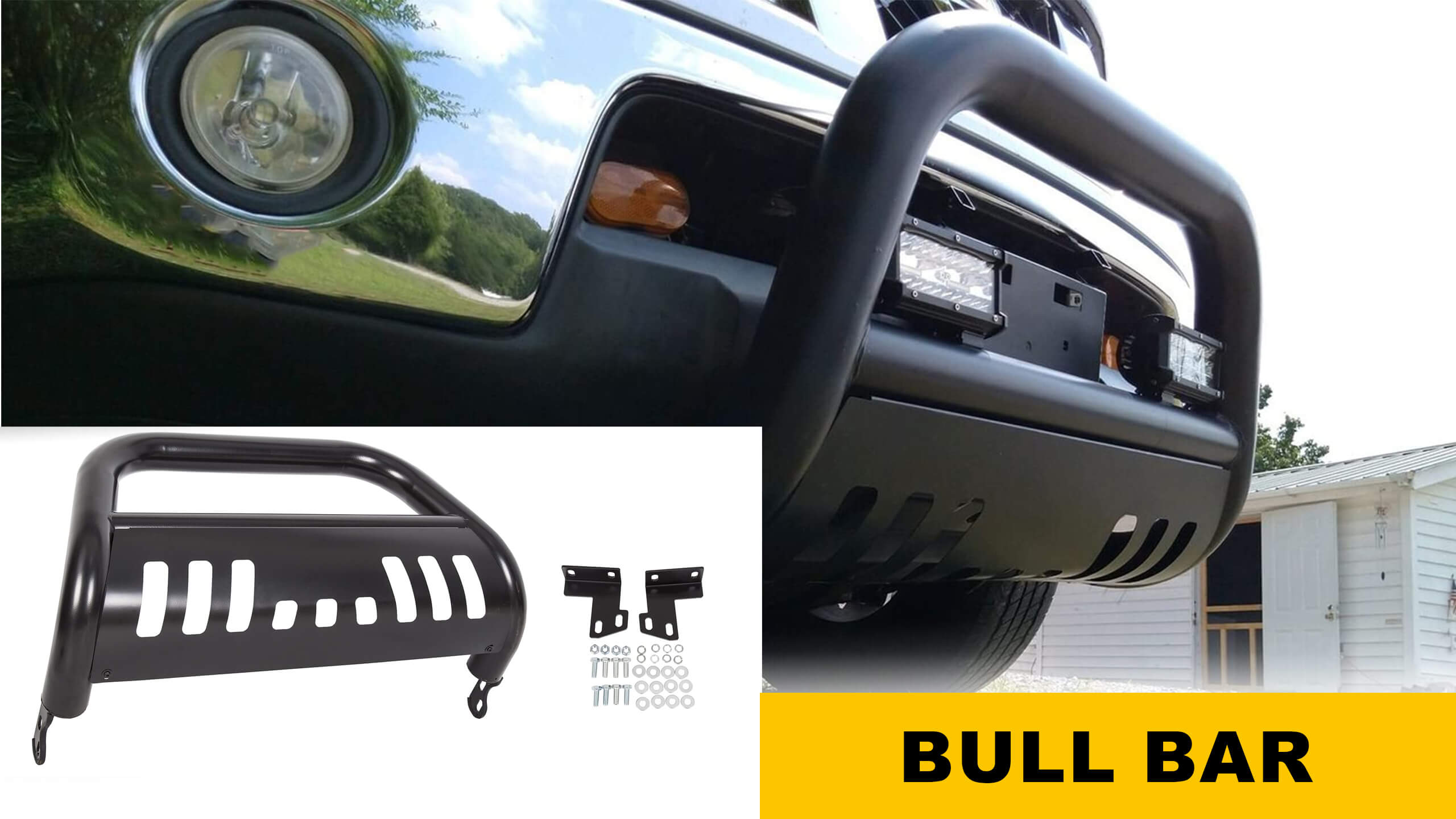
Car Grille
A car bumper grille is an integral part of the car's front bumper, usually between the headlights. One of the main functions of a car bumper grill is to allow airflow into the engine compartment for cooling. Grilles feature a pattern of openings, or grids, that facilitate the passage of air to cool the radiator, engine, and other heat-generating components. This helps prevent overheating and ensures optimum engine performance.
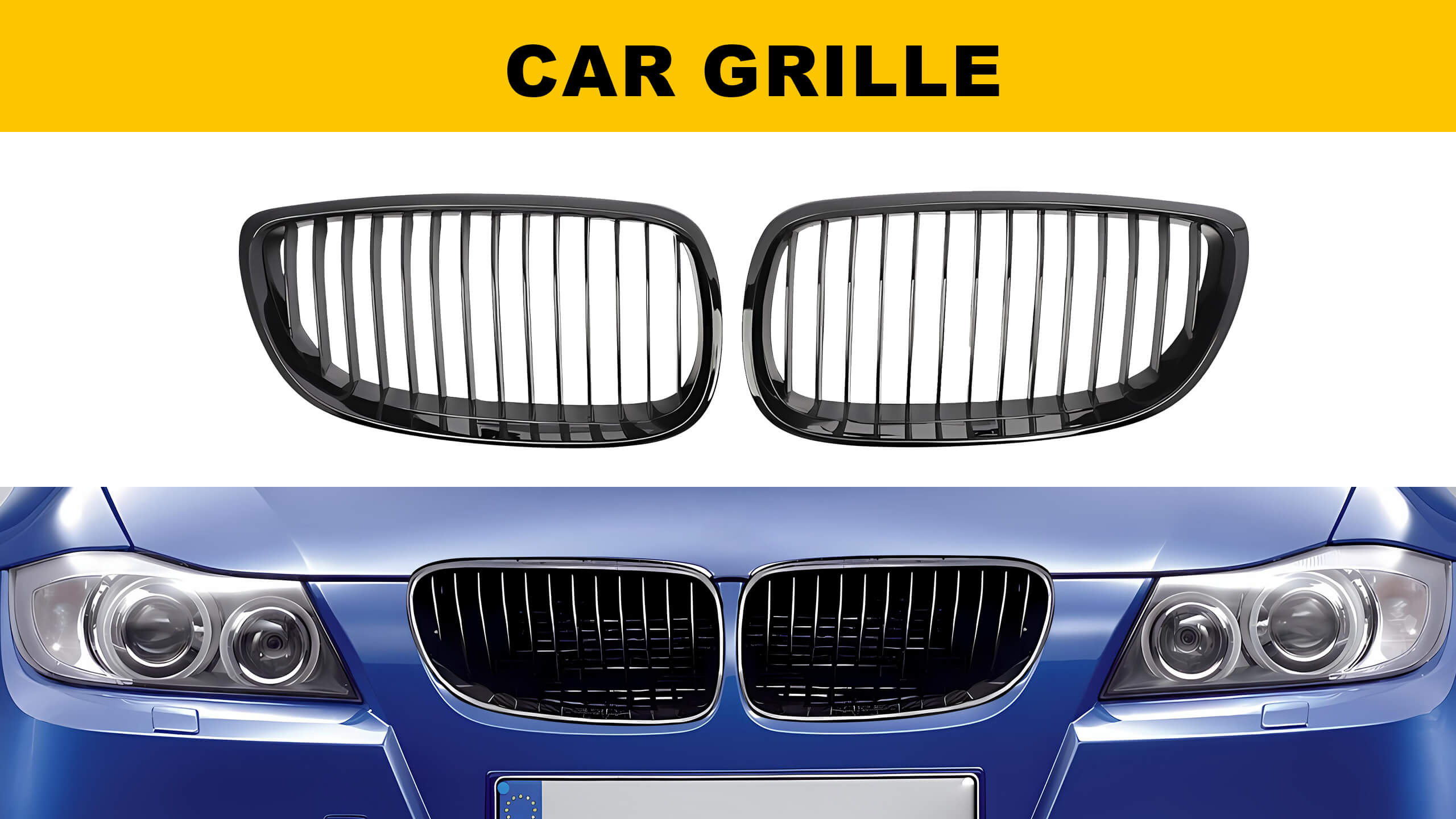
In addition to its identity function, the manufacturer's badge or logo is usually included in the design of the grille to help the vehicle's brand recognition and differentiation from other models. And if you want to upgrade the appearance of your car, you can also optionally install grille lights to make your car look more stylish while enhancing driving safety.
Grille lights are often used as additional lighting to provide extra illumination to the front of a vehicle while enhancing its visibility in low light conditions or inclement weather, making it more noticeable to other drivers, pedestrians, and road users. This increased visibility can help improve safety, especially in situations where the vehicle needs to be seen from a distance.
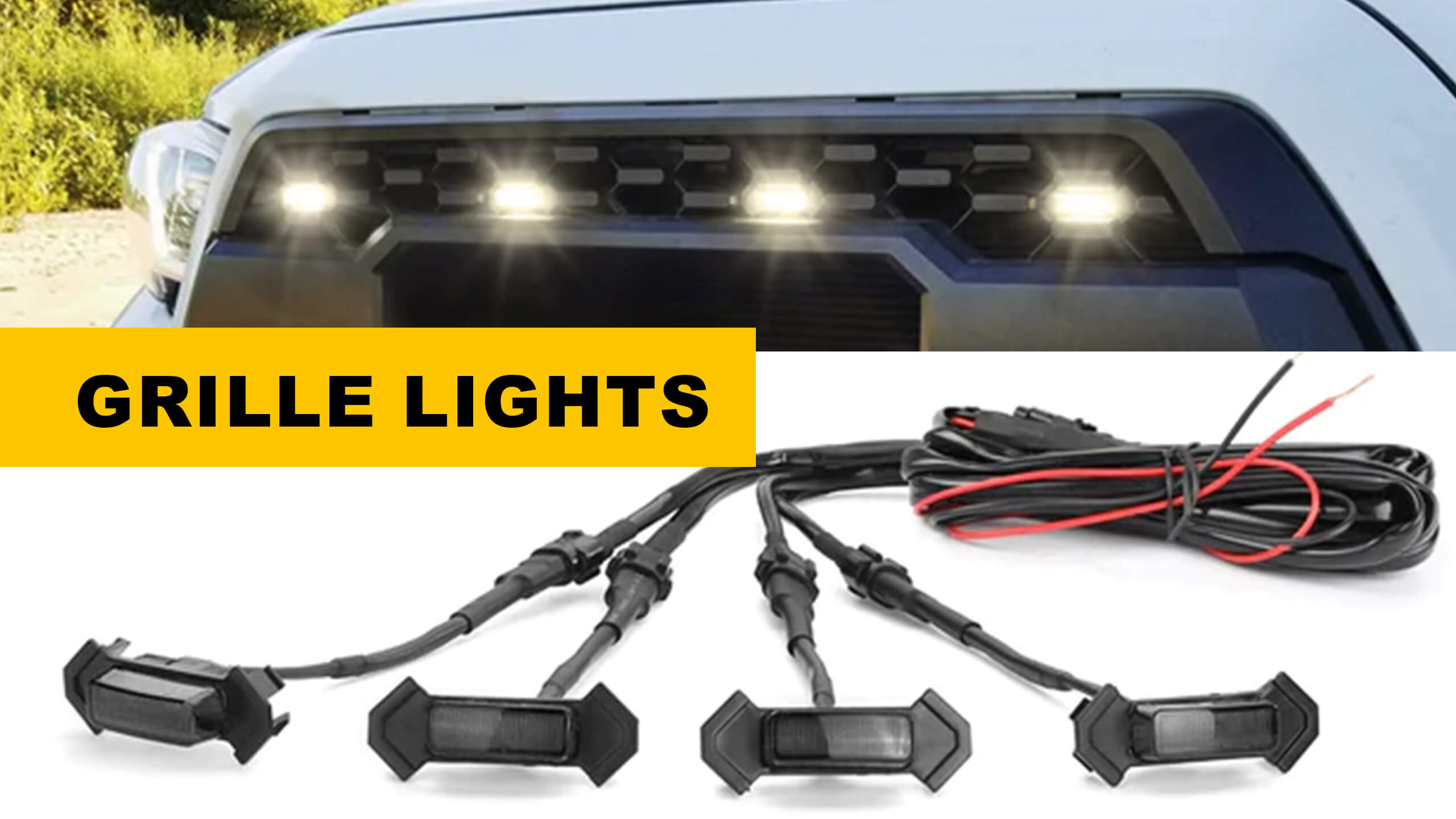
Section 3: Visibility and Illumination
Windshield
Automotive windshields play a vital role in providing visibility, protection and structural integrity. It's a large, curved glass panel that sits at the front of the vehicle, spanning from the roof to the hood. Generally refers to the glass at the front of the vehicle, and its main function is to provide the driver and passengers with a clear and unimpeded view of the road ahead. Of course, the rear window of the car is sometimes called the rear windshield, which is used to provide the driver with a driving view behind the car through the rearview mirror.
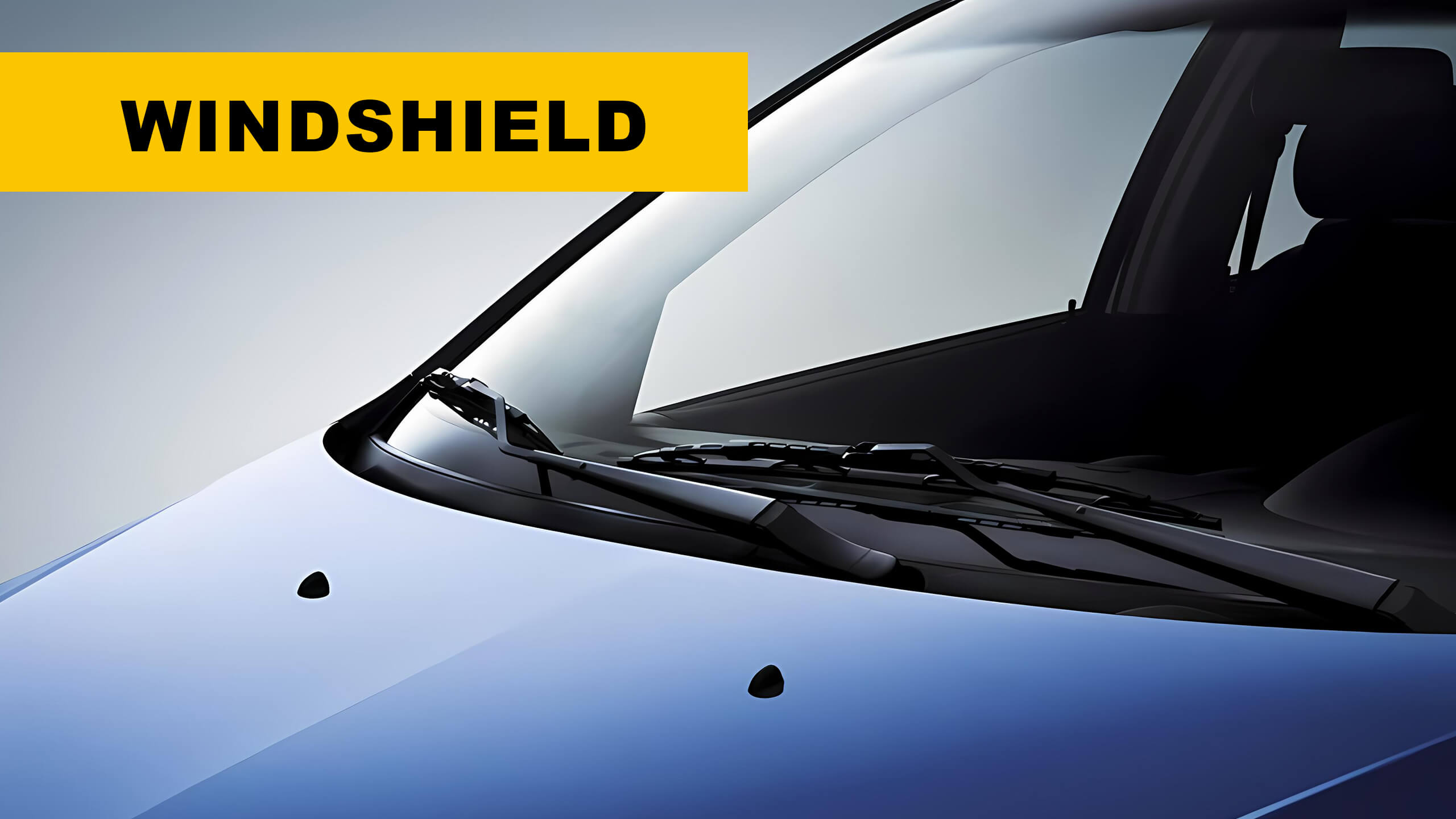
The windshield is designed to be transparent, allowing natural light to enter the vehicle while protecting occupants from wind, rain, dust and other external elements. It is important to note that any damage to the windshield, such as cracks or chips, should be dealt with promptly. Even minor damage can compromise the structural integrity of a windshield and affect visibility, creating a safety risk. Therefore, most car owners will choose to install a car window weather stripping to strengthen the windshield and improve its protection against wind and rain and noise.

Windshield Wipers
An automotive windshield wiper is a mechanical device whose primary function is to remove rain, snow, dirt, and other debris from the windshield to maintain clear visibility and improve driving safety in adverse weather conditions.
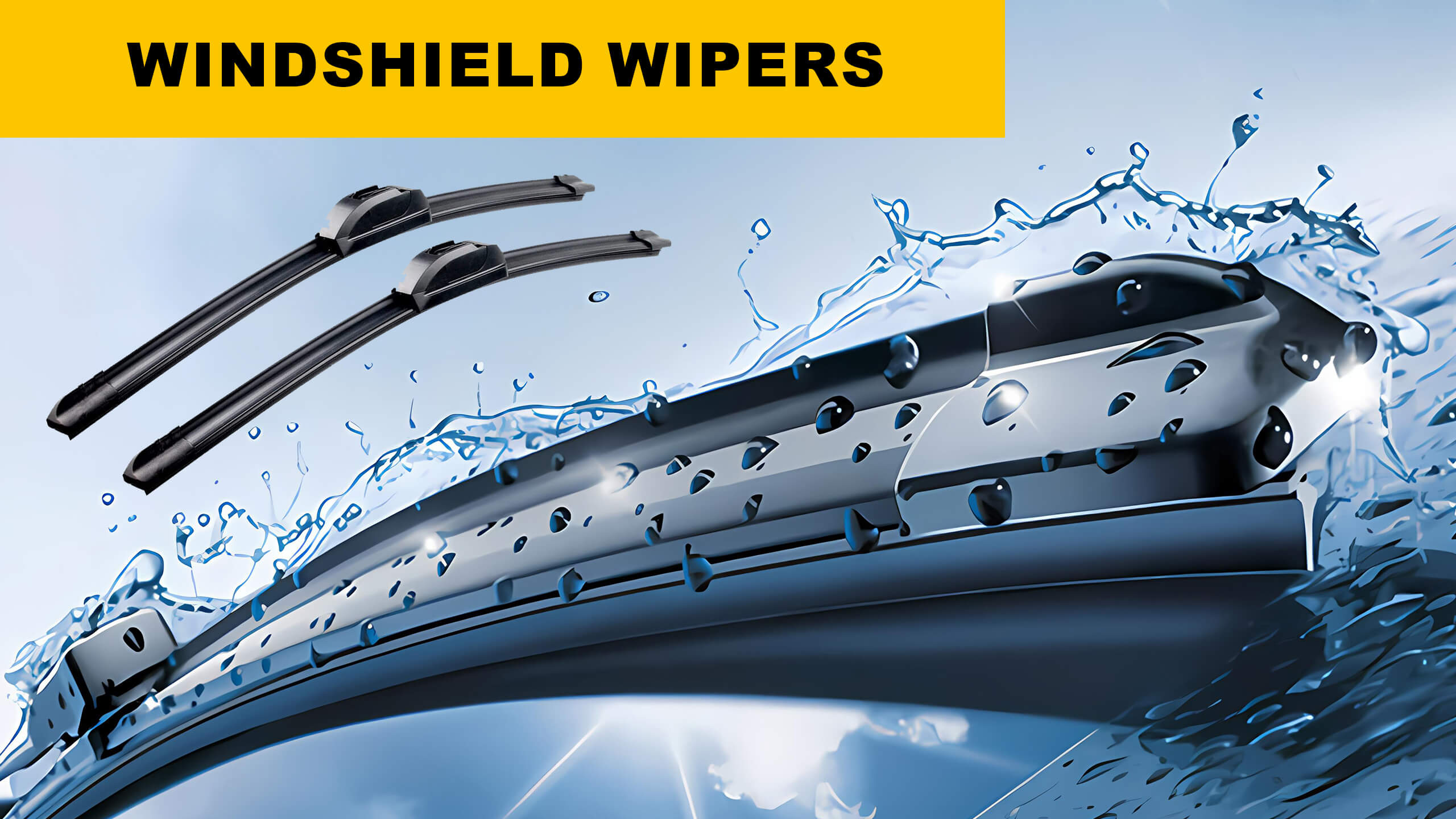
The headlights of an automobile are one of the main sources of illumination for the car, providing light for driving in low visibility or at night. They are usually located on either side of the grille and can also be integrated into the hood design for aesthetic appeal. In some car designs, headlights can be hidden. When the driver presses the headlight button is, they are put in place by rotating or flipping in a cool form. Most car lights headlights are adjustable in height and direction, which facilitates the driver to optimally adjust the road lighting while driving the car according to the actual situation.
Car headlights usually have two modes of low beam and high beam to adapt to different driving conditions, if you want to learn more about the knowledge of headlights, please read this blog - LOW BEAM VS HIGH BEAM - BETTER WAYS TO USE YOUR HEADLIGHTS
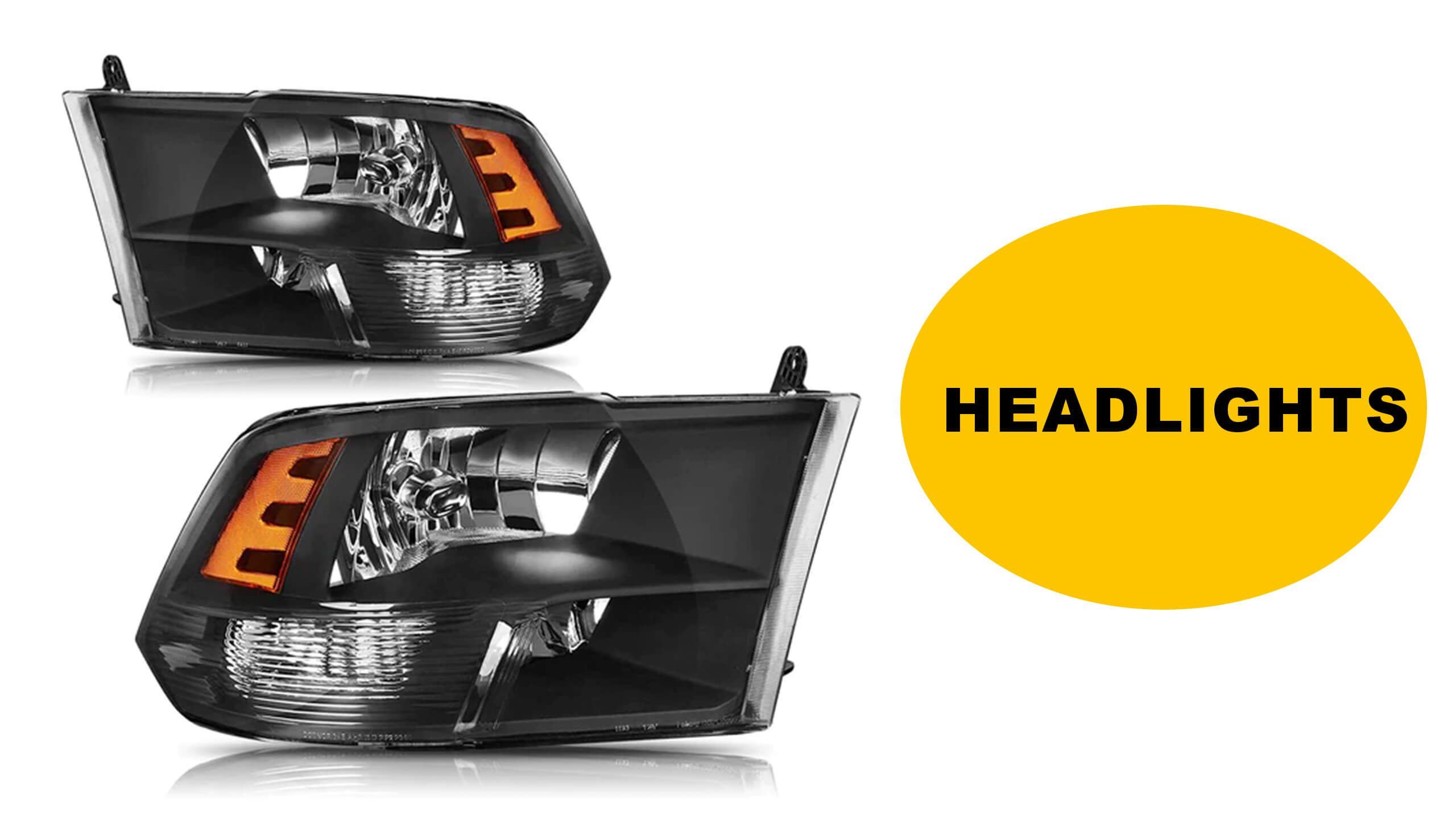
Fog lights are usually located at the front of the car in a low position, such as under the bumper. They are mainly used for illumination in foggy or inclement weather conditions, producing a wide and low beam of light that can reduce glare, provide better visibility for drivers in foggy or heavy rain and other inclement weather conditions, and improve driving safety. Currently fog lights are more commonly used and legal colors are yellow and white, if you want to know more about the details of fog lights, you can read this article - WHAT ARE THE FOG LIGHTS AND WHEN TO USE THEM?
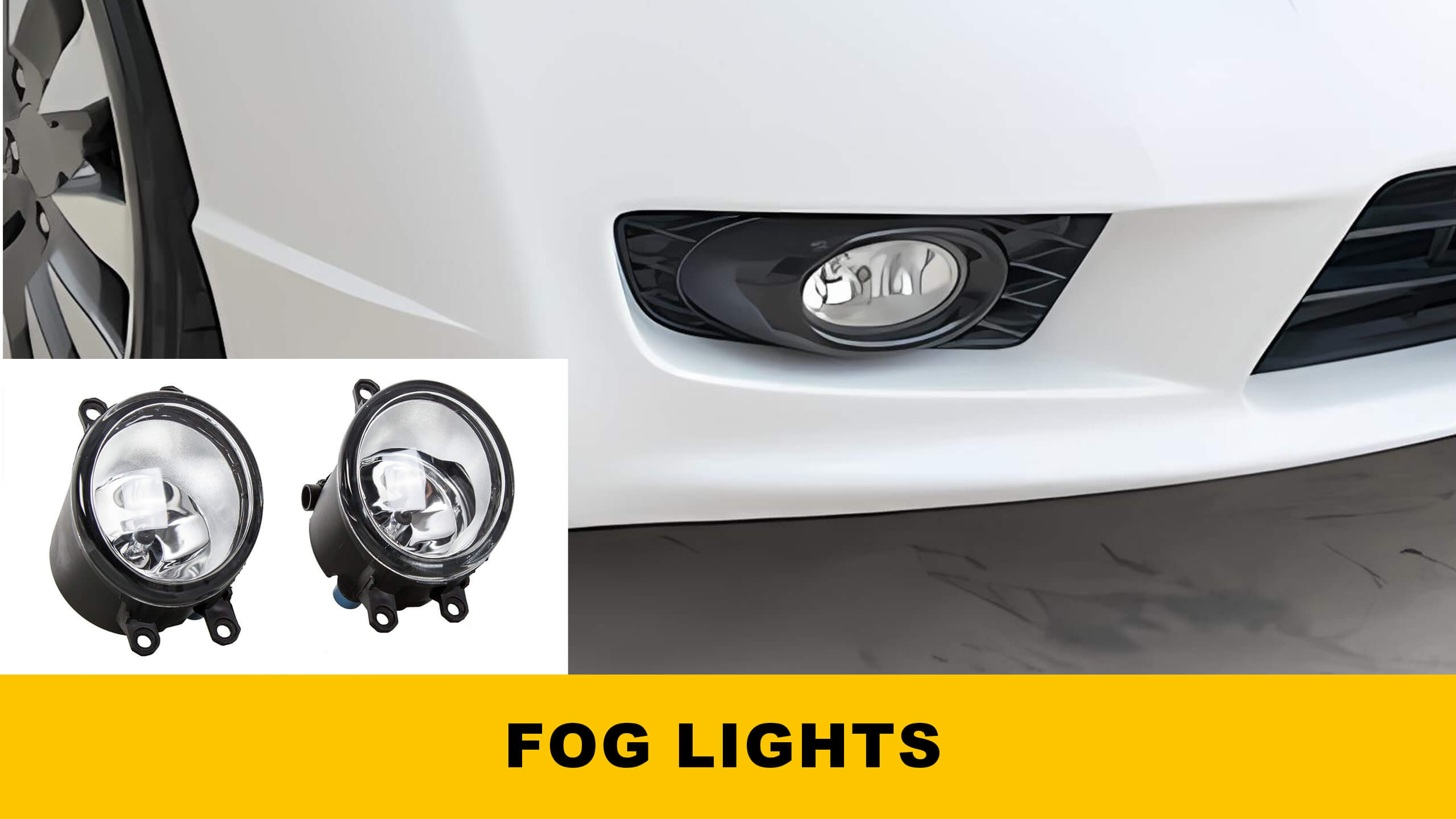
Side Mirrors
Mirrors are essential to safe driving. They provide the driver with a view of the rear and side areas of the car. It usually contains three mirrors: a rear view mirror and two side view mirrors. It is usually mounted on the windshield or roof of a vehicle and enables drivers to monitor and assess traffic conditions and other objects behind them.
The car side view mirror, also known as the side mirror or wing mirror, is an essential component of a vehicle's exterior. It is typically located on both the driver's and passenger's sides of the car, mounted on the exterior of the doors. The rear side-view mirrors are all adjustable, which allows the driver to customize the position of the mirrors according to their height and seat, helping to ensure optimum visibility and minimize blind spots. Thereby improving the safety of reversing and driving at night.

Automotive turn signals are divided into front turn signals and rear turn signals. Rear turn signals are included in the taillight cluster, while front turn signals are mainly mounted on the front of the car, near the headlights and on the side fenders above the front wheels. The indicator lights come on when the driver presses the turn indicator button on the car's controller. The primary function of a car turn signal is to indicate the driver's intent to turn or change lanes. By informing other drivers and passersby of the car's intent to turn or change lanes, it helps to improve communication and prevent accidents on the road.
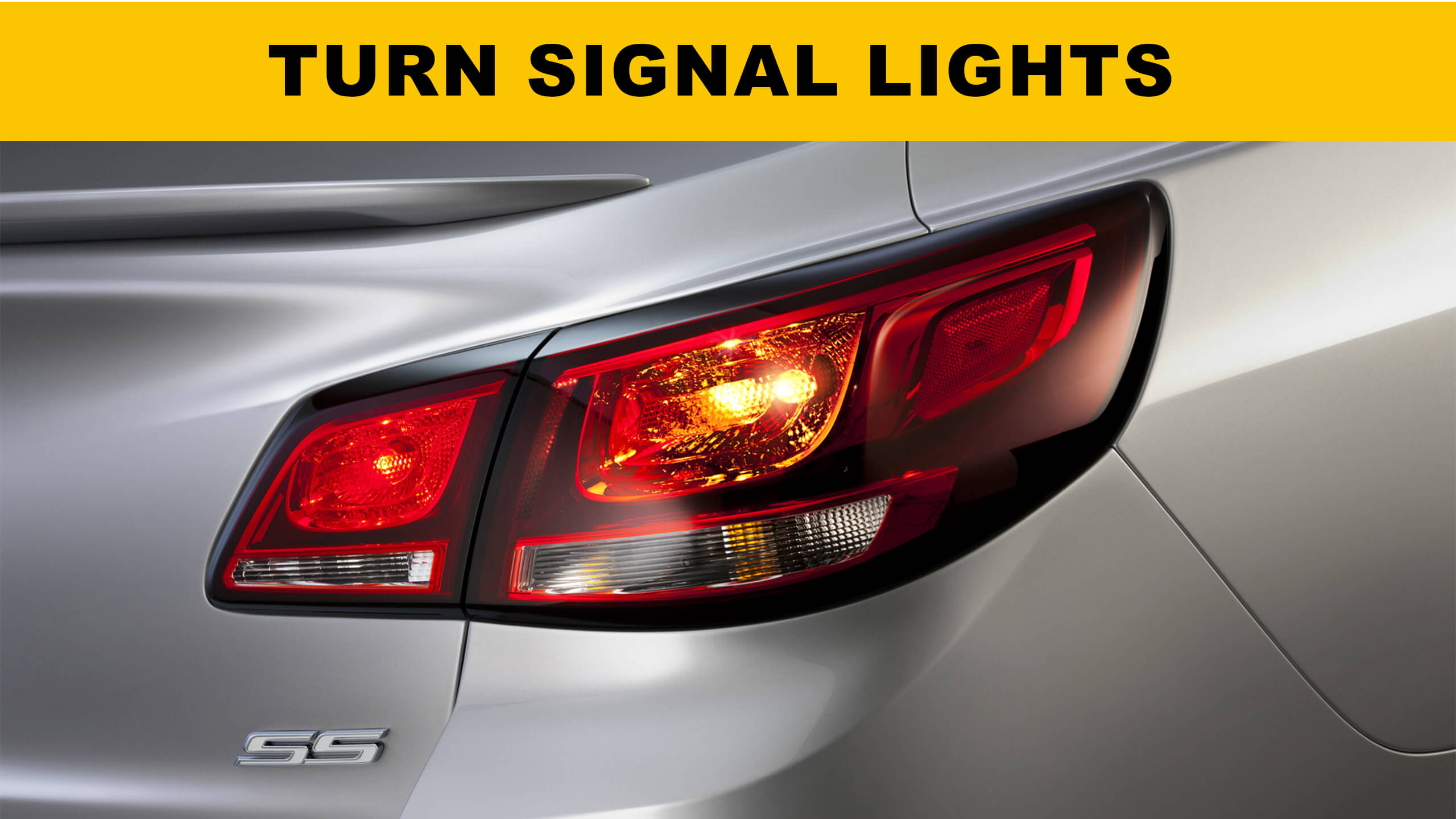
(Warm tips: If you are having problems with your turn signals you can read this article - TURN SIGNAL BLINKING FAST | HOW TO FIX & WHY)
Car tail lights are the lighting system located at the rear of the car, usually on both sides of the trunk, including brake lights, parking lights, rear turn lights, etc., each light has a different purpose.
When the headlights are on, the taillights located at the rear of the vehicle are also illuminated at the same time, designed to provide visibility behind the vehicle and help other drivers see your vehicle in low light conditions or inclement weather conditions. Brake lights glow red when the car is braking, and they are usually brighter than taillights.

The rear turn indicator is also included in the tail light group, and the color is mostly amber yellow, mainly to indicate to the driver behind that the car intends to turn in the direction in which the turn indicator flashes.
The reverse light is also in the tail light cluster and glows white when the car is in reverse. All the bulbs of the taillight group are designed for the safety of car driving, and they are indispensable.
(Warm tips: If you want to understand tail lights further, please read this article - TAIL LIGHTS VS BRAKE LIGHTS: IMPORTANCE AND FUNCTIONALITY)
Section 4: Convenience and Security in Access
Car Doors
A car door is a component that connects the body and the compartment. Its main function is to provide access to and from the vehicle and to protect the occupants from the external environment and collisions. Furthermore, doors play a vital role in providing safety to the vehicle and its occupants. They can be locked electronically or manually with a key or with a central locking system. When properly locked, the doors prevent unauthorized entry and keep the contents of the vehicle secure.

Door Handles
A vehicle door handle is a device located on the exterior and/or interior of a vehicle door that allows the user to open and close the door. It is a convenient and necessary access point for entering and exiting the vehicle. The exterior door handle is usually located on the outside of the vehicle door, usually at the front and rear ends. It provides a convenient way for the user to grab and pull the door from the outside. The inside door handle is located on the inside of the vehicle door, usually near the armrest or door panel. It allows the occupant to open the door from the inside. Different automobiles have different design styles of door handles, for maintenance door handles are simply replaced with new ones that fit the vehicle.

Car Windows
Car windows are usually clear panels made of toughened or safety laminated glass and serve a variety of purposes inside the vehicle. Typically, each door has its own window, which can be fixed or removable. Some windows open horizontally in a sliding fashion, while others open and close vertically. The opening mechanism can be manual or electric.Most modern vehicles are equipped with power windows that can be operated electronically using switches or buttons. This feature allows This feature allows drivers and passengers to conveniently open or close the windows with minimal effort.
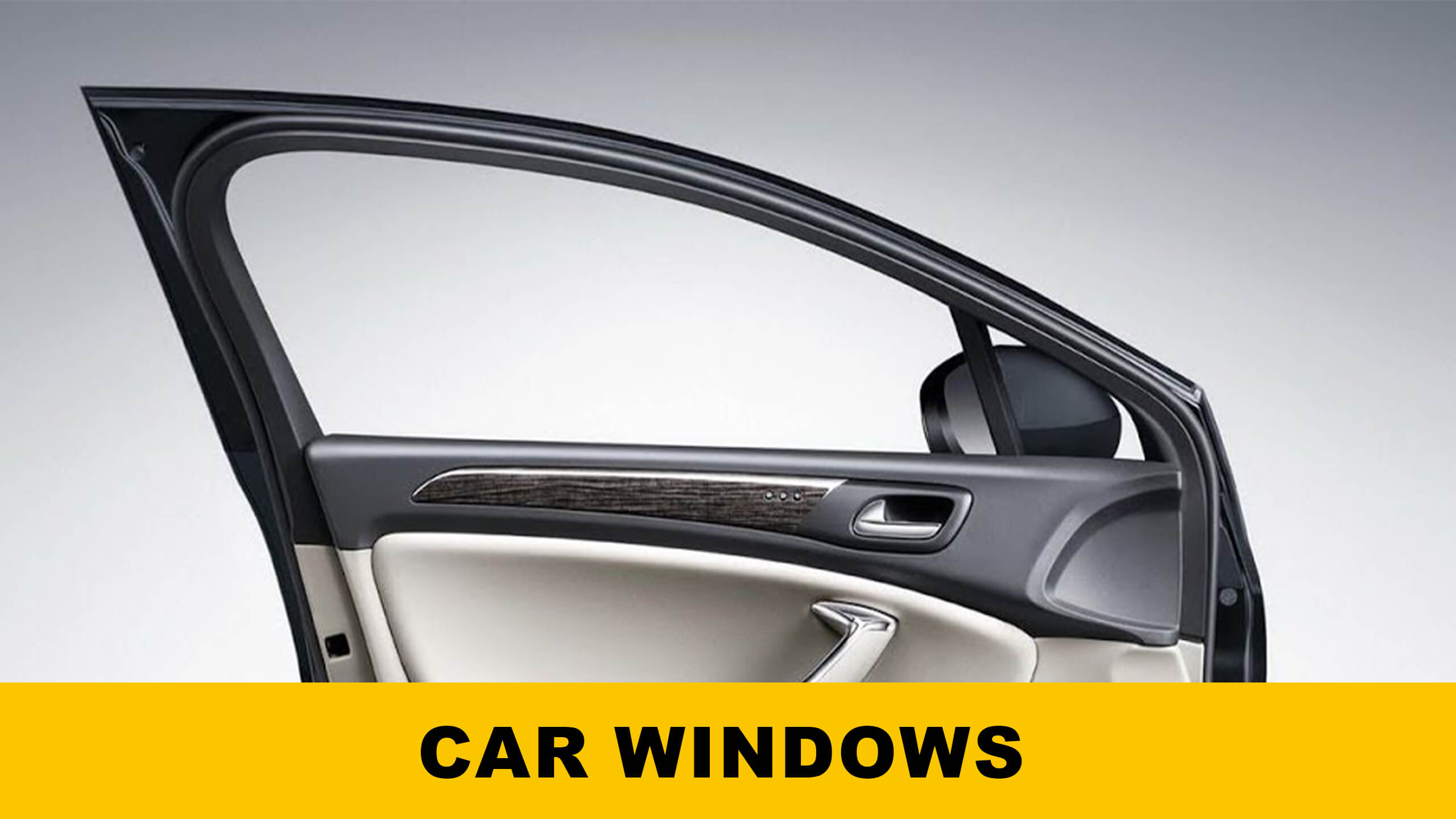
However, when the sun is beating down and the occupants may need protection from the sun or find the sun too harsh for their eyes, they may choose to apply a window tinting film to the windows to achieve the desired shading effect while maintaining a clear driving view. while ensuring a clear view of the driving field.

Sunroof
A sunroof is an optional addition to a car, depending on the design of the car. It is a panel or opening in the top of the vehicle that can be opened or closed to let sunlight and fresh air into the interior. It provides an additional feature to enhance the driving experience and comfort of occupants. Sunroofs come in a variety of styles and designs, offering different levels of functionality and features. different levels of functionality and features.

Trunk
The car trunk, also known as the boot in some regions, is a compartment located at the rear of a vehicle that provides storage space for carrying luggage, groceries, equipment, and various other items. It is an integral part of the car's design, providing a secure enclosed area to store items or transport cargo without cluttering the passenger compartment. It is important to note that the weight distribution in the trunk of a car should be balanced for safe driving and that the engine will consume more fuel if you are transporting more items.Besides,in some cars, the engine is mounted at the rear or in the center, in which case the trunk houses the car's engine and the hood is used as an additional storage space for transporting luggage or other items.
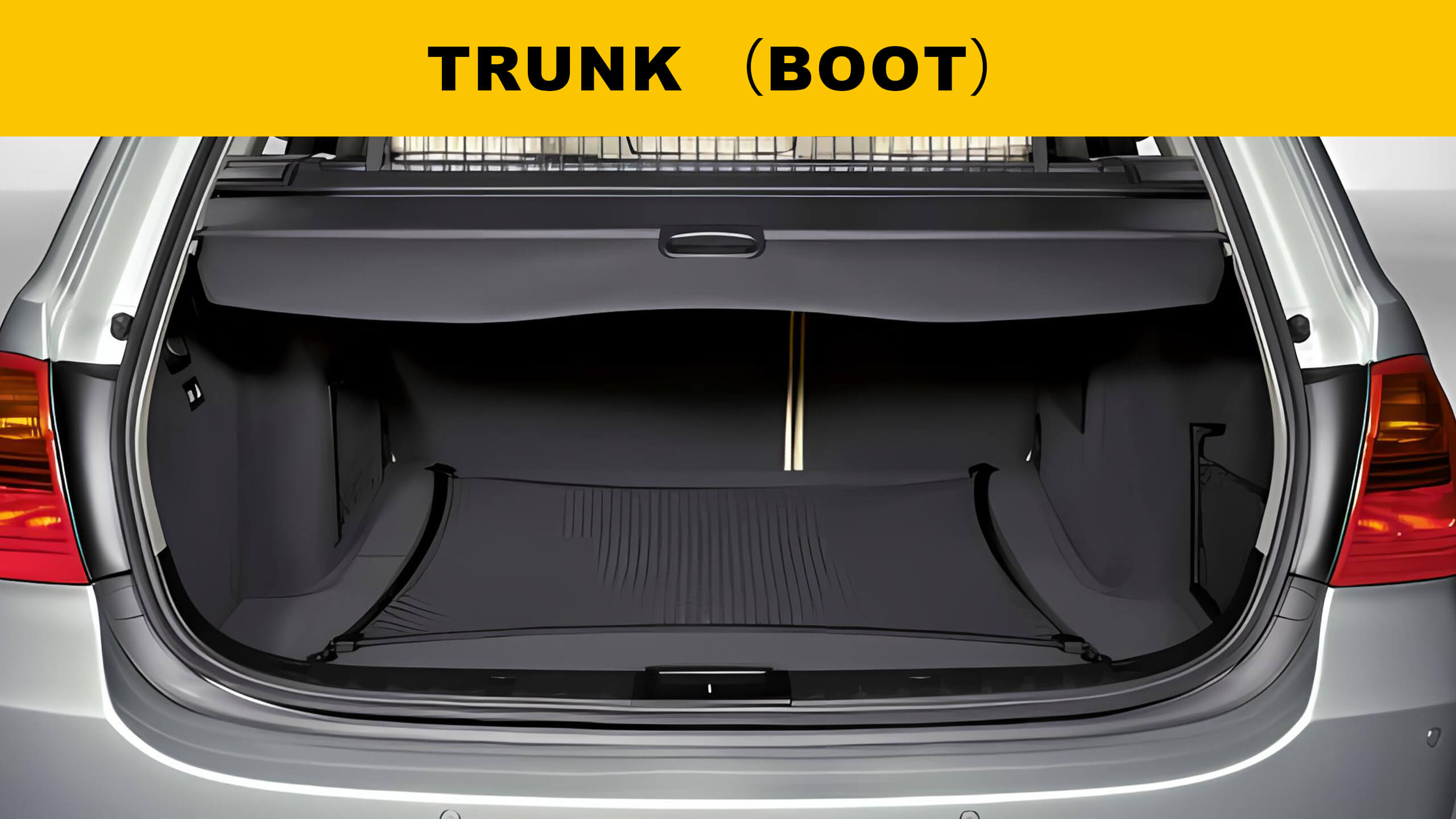
Section 5: Traction and Performance
Tires
Car wheels are composed of rims and tires. The rim provides structural support to the tire and creates an airtight seal between the rim and tire. This seal allows the tubeless tire to be inflated with compressed air or other gas, providing a safe, comfortable ride on the road. Its main function is to provide traction and grip on the road surface, enabling the vehicle to accelerate, brake and turn efficiently.
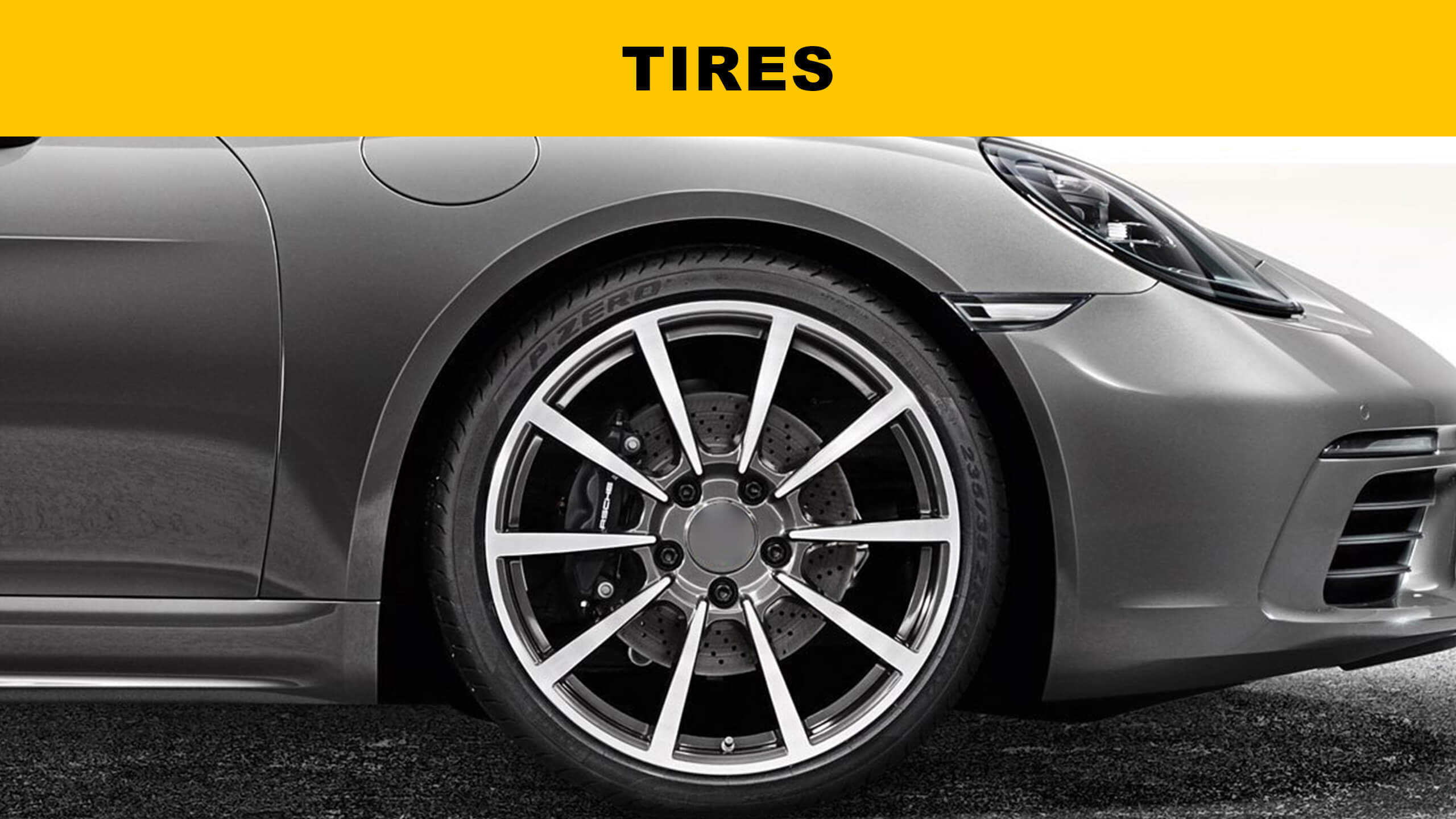
Tires with various styles and sizes can be customized or affixed with wheel rim stickers to enhance and improve the look of your car, creating your own unique car style.
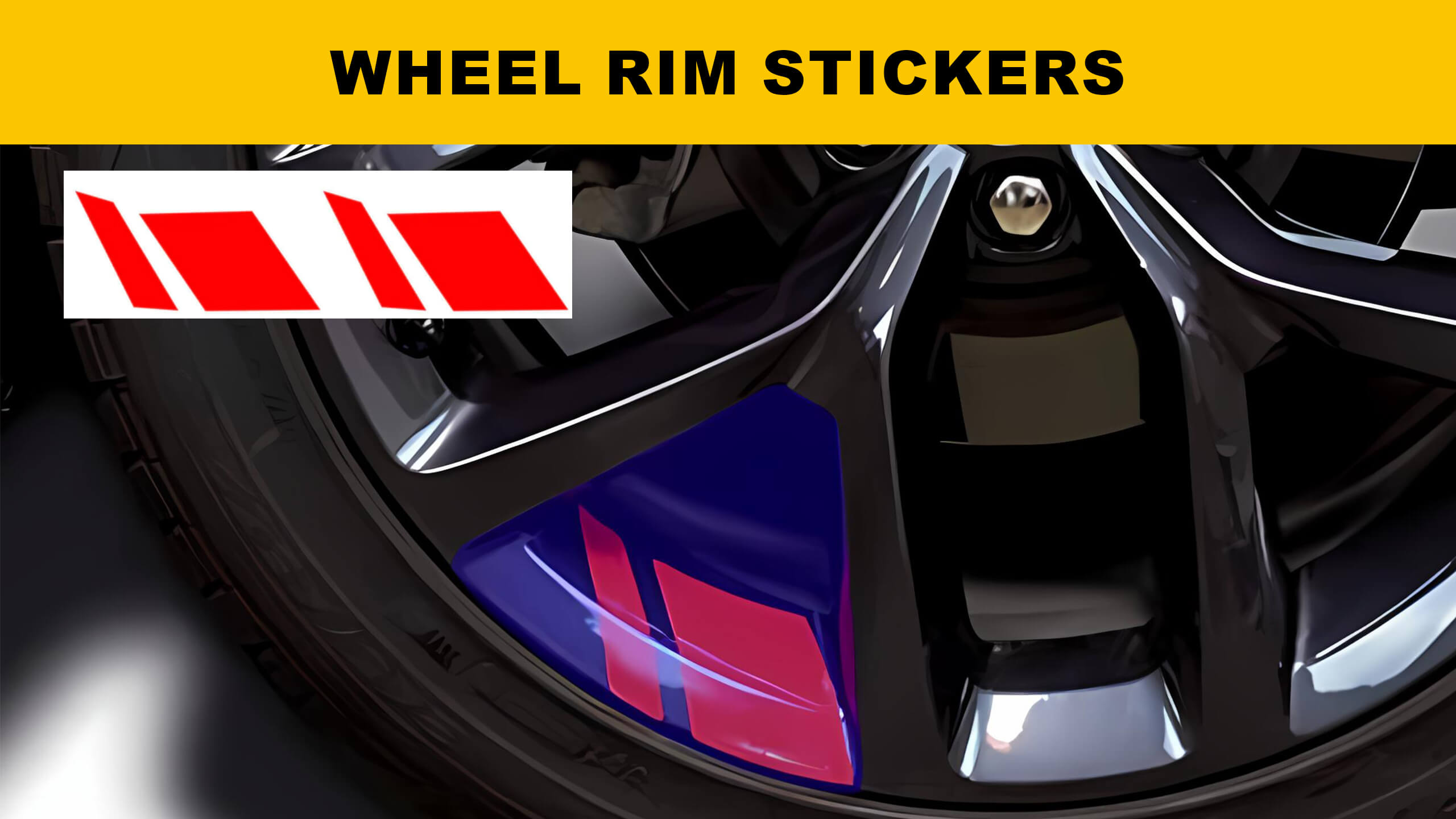
Fenders
A car fender is the part that fits over each wheel and holds the wheel in place. The main function is to prevent muddy water, silt, stones and other sundries splashed by the wheels from staining or damaging the vehicle body and other vehicles and pedestrians. Auto fender liners are plastic or rubber guards that sit inside the wheel wells of your vehicle. It is designed to prevent dirt, mud, water, environmental toxins and other impurities from seeping into the engine compartment and causing corrosion damage to wires and other components in the wheel wells. Fender liners can be damaged from impact, abrasion, or exposure to harsh conditions.
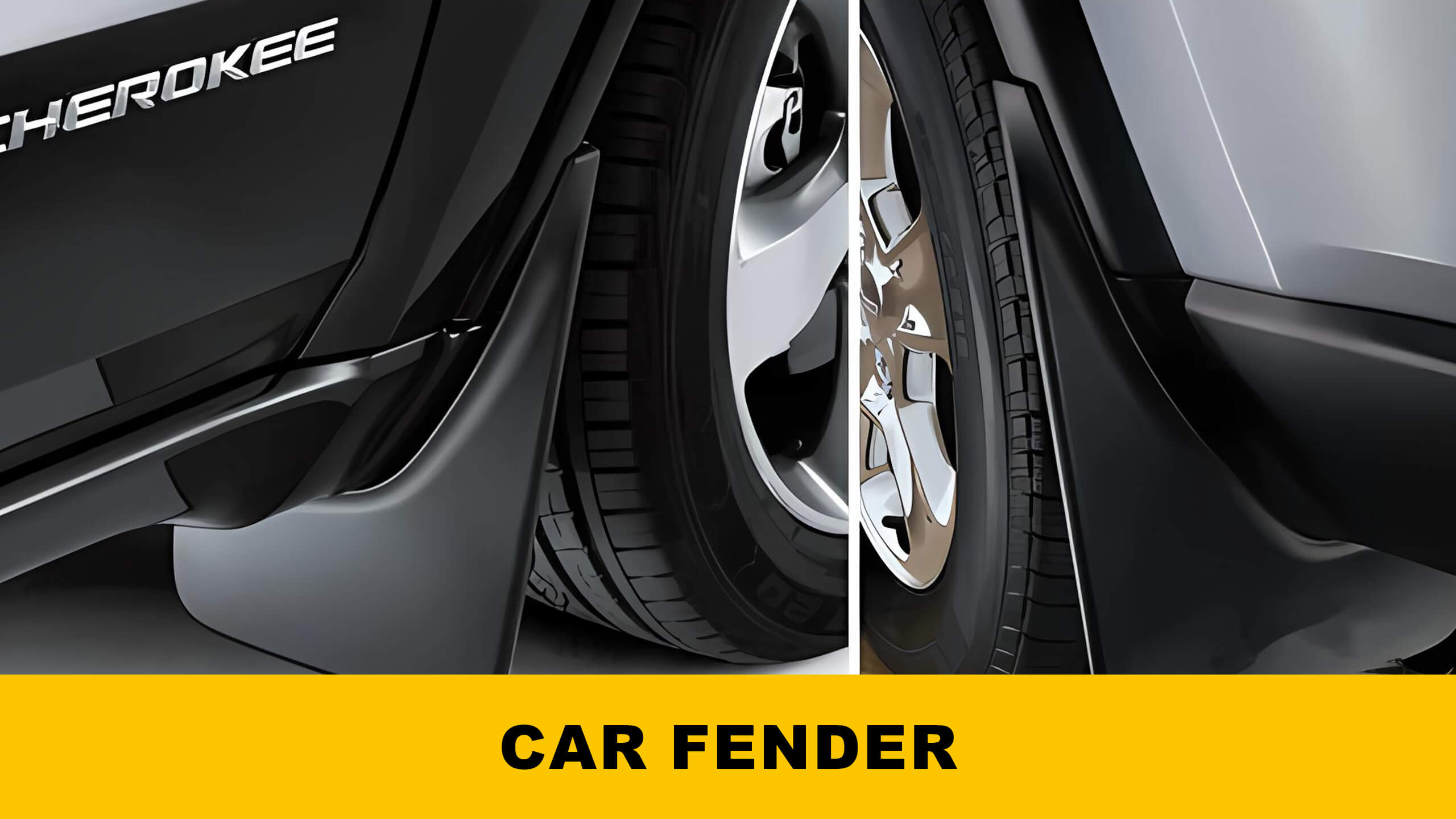
Regular inspection and maintenance of fender liners are very important to ensure their effectiveness and longevity. Worn or damaged fenders may fail to prevent road debris from entering the engine, causing damage to the engine bay. Additionally, the protective paint or coating on the fender may be compromised, increasing the risk of rust and corrosion. This can affect the car's stability and handling, which can lead to safety concerns.
Typically, fender maintenance involves taking the vehicle to an auto repair shop for polishing and protection with professional tools like paint-free dents or body fillers. However, if the wear is serious or you prefer not to deal with repairs, you can directly replace the new fender. Note that the fenders for different models of cars may be slightly different. This will require you to purchase replacement fenders that match your vehicle's make, model, and year.
Exhaust Pipe
The car exhaust pipe is an integral part of the car exhaust system and is installed at the rear end of the car. Responsible for guiding and exhausting the exhaust gas produced by the engine and reducing the noise produced by the engine when the exhaust gas is emitted, the exhaust pipe is usually made of durable materials so that it can withstand high temperatures and resist corrosion. In addition, the exhaust pipe also has an aesthetic effect, which is designed to fit the car in different shapes and sizes to enhance the appearance of the car.

Section 6: Identification and Communication
License Plate
A license plate, also known as a number plate or registration plate, is a unique alphanumeric identification tag affixed to the front and rear of a vehicle. It serves as a vital identification element for vehicles, providing important information about the vehicle and its registration. Vehicle license plates are usually mandatory and are regulated by traffic laws in most jurisdictions. Vehicle license plates are usually mandatory and are regulated by traffic laws in most jurisdictions. Driving a vehicle without a valid license plate or with an improperly displayed license plate is usually considered a traffic violation.

Car Antennas and Antenna Bases
A car antenna is a device used to receive or transmit radio signals in a vehicle. Common installation locations are on the roof, rear window, windshield and other parts of the car. It plays a vital role in ensuring that radio broadcasts, GPS satellite signals, cellular communications and other wireless technologies are received clearly and reliably. Related to this is the component that secures and secures the antenna to the vehicle, the car antenna base (antenna mount). It serves as the connection point between the antenna and the body, providing stability and conductivity for optimum signal reception or transmission.

Conclusion
In conclusion, all of the above mentioned exterior body parts are very important to the vehicle itself, not only for its design and aesthetics, but also for protecting our driving safety while allowing us to enjoy the convenience of the car. Without these parts, the vehicle may not be able to drive properly and safely on the road. Understanding and being able to use these parts effectively will help us drive better and enjoy the convenience of traveling in the automotive era.


















Leave a comment